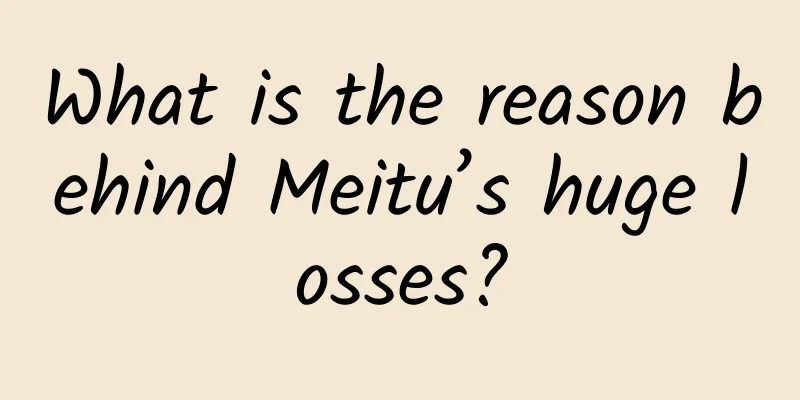3 charts to master the methods of marketing promotion and implementation planning

|
In marketing promotion , we can use various models to form some comparative data, such as matrix analysis, to analyze and judge and find the correct marketing strategy; and some chart models can help us better understand the current status of the task and improve work efficiency. I have always insisted that the underlying logic of marketing is much more useful than routines. The method itself is neither mysterious nor profound, but it still requires a lot of accumulation to combine it with the business to make it meaningful and executable. This time, I will break down the three key charts and explain the ideas behind them in detail. After reading, you can try to draw them yourself. I hope you can learn and apply them in practice. 1. Matrix ModelThe matrix model is used a lot in the workplace. Just draw a horizontal and a vertical line, define the X and Y axis variables, and you can find the coordinate position. The famous Boston Matrix (market share/demand share), the four quadrants of time management (important/urgent), and the three-dimensional RFM (recent consumption/frequency/monetary amount) are all classic matrix models. (The common point is that the fourth quadrant in the upper right corner is the goal) Market planning often uses a matrix model to position brand strategies and identify areas where market potential matches business capabilities for key investments. Let's take Company A, which produces and sells industrial PDAs, as an example: The new retail in the upper right corner is the general direction of development in recent years. Company A itself has a large number of successful cases in this industry, mature solution partners, highly reliable products, and a strong team. Therefore, new retail is an area for continuous investment. The logistics and big health industries have great development potential, but existing business capabilities do not yet have a competitive advantage, so they need to be focused on investment. Anyone who has done matrix analysis knows that this model looks simple but is difficult to implement. Is the enterprise's own capability assessment objective? What data can support the attractiveness of the industry? … Therefore, matrix analysis is the part of strategic analysis that requires the most objective data, combining multiple angles such as major trends, third-party reports, internal performance, sales, and feedback from agents for comprehensive analysis. I have also seen some companies come to a conclusion first and then look for data to prove it. This often leads to preconceived ideas, a lack of rational and objective analysis, and misleading decision-making. The matrix model is not only used to plan business strategies. If the X-axis remains unchanged and the Y-axis becomes product competitiveness, it is a simple market-product (MPF) matching model. By marking the coordinates of competitors, you can find the company's position in its industry ; the famous Magic Quadrant is a research company that uses the two dimensions of foresight and execution ability to analyze the leaders (the fourth quadrant), challengers, explorers and observers in a certain segment. After analyzing the company's business, products, and competitive positioning using the matrix model, you can begin planning the marketing strategy. 2. Information HouseSimply put, marketing strategy is a question of choosing which market to focus resources on, who to talk to, and how to talk. Using the message house model is a very good way to decompose marketing strategy. This model looks very simple and is not new at all. IT architects are very familiar with it (for example, those who talk about the middle platform often use several layers to divide the architecture). It just has a pointed hat to emphasize the unified goal and makes it look like a house. A house has only one roof, and the bricks and pillars below can have many layers, and each pillar can also be made up of many layers of bricks. Uniform bricks and tiles can also be added under all the pillars to make the house more stable. Friends who have read the "Pyramid Principle" will also find that the information house is actually a logical decomposition based on the goal. The only difference is that the pyramid emphasizes that each segment must meet the MECE principle and are unrelated to each other. But in marketing applications, the decomposed parts are related and not independent of each other. A well-planned information house, when used for brand information dissemination, can ensure that the content delivered through various channels and to different target audiences is consistent in its core. By extension, this room can be used not only for annual planning, but also for content planning of a certain campaign, and even to mark the communication channels and make omni-channel marketing plans. It can also be used to decompose corporate strategies , such as the following example: The roof becomes a vision, such as a company’s “creation of a vast ocean of connected things”. This vision seems unrealistic, right? So there is a layer of explanation below to make the goal clearer. The next layer could be a three-year strategic plan, such as developing a self-developed operating system, a global marketing system, and establishing a cooperative ecosystem… Breaking it down into each key task, for example, the global marketing system requires team recruitment, marketing system building, brand positioning, etc. Step by step, we broke down the lofty goals into practical implementation. If you want to add more, you can also add assessment criteria for each strategic pillar. From this perspective, the information house is also a very useful thinking model for breaking down strategy into tactics . However, like the matrix model, the information house looks simple but is difficult to implement. For example, how to break down brand positioning into core messages and through what channels to deliver them? How to say it? These all require in-depth thinking and multi-faceted discussion. Once the breakdown and specific campaign plan are done, a Gantt chart can be used. 3. Gantt chartThe Gantt chart is actually also a kind of matrix, except that the horizontal axis is time and the vertical axis is execution details. It is the most commonly used planning tool in marketing execution. Why use Gantt charts instead of ordinary Excel spreadsheets for planning? This is because the work of marketers is too miscellaneous and trivial, requiring multi-tasking and multi-threaded work to be done simultaneously. For example, when I was sending UI design requirements to advertising companies, I was replying to messages on WeChat and thinking about copywriting inspirations… For example, if you want to organize an offline marketing event and follow up on the speaker's schedule, you also need to follow up on the stage design and negotiate the entry time with the hotel... Dividing time into small chunks, completing work in a very short time and switching at any time are essential skills for a versatile marketer. Taking the website building plan as an example, let’s demonstrate the meaning of managing multiple tasks at the same time. For example, in the second week of January, we need to select partners, plan content, etc. Instead of waiting until you find a partner before starting the next work. But I found that many friends, although they made Gantt charts, were still single-threaded operations. Did you find any difference between the plan below and the demonstration above? Although it is also a Gantt chart, it actually means that one task is done after another is completed, and there is no overlap in time. The next step will not start until all previous tasks are completed. This method is a "series connection" in the circuit, which not only prolongs the time, but is also prone to delays in progress due to delays in the previous tasks. However, through "parallel connection", multiple tasks can be carried out at the same time, time can be reasonably allocated, and communication and coordination can be carried out to improve efficiency. After talking about these three PPTs, you will find that they are actually talking about three thinking methods. The matrix model uses two related variables to make a positioning, emphasizing objective data and is a quantitative analysis; the information house breaks down layer by layer based on the goal to ensure unified information when it is disseminated; the market execution plan uses the Gantt chart for effective project management. These three commonly used thinking patterns are very useful in marketing work, and everyone can put them to use. In addition, these methods are also suitable for making personal annual plans; for example, use the matrix model to analyze your own strengths, use the information house to plan your important annual events, and use the Gantt chart to formulate a specific action plan. Have you all learned it? Author: Hanni Source: Time Notebook |
<<: Why do maternal and infant brands need to conduct private domain operations?
>>: App launch growth: user awakening methods
Recommend
How to maximize the effect and benefits of promotion?
Maximize the acquisition of target users Acquisit...
How to promote App channels effectively? 3 stages!
APP channel promotion needs to go through three s...
B station’s precise traffic layout method!
In the past two years, friends who have made shor...
iOS 10 new features improve secure WiFi connection pop-up reminder
WiFi has now become a technology that people rely...
5 years of 0 interest, behind the different price wars, what really dominates users is intelligence
The price war in the automotive industry will not...
China Charging Alliance: Operation status of national electric vehicle charging and swapping infrastructure in July 2022
National Electric Vehicle Charging and Replacemen...
【Practical】Mobile QQ and Qzone Speed Optimization Practice
About the Author: Huang Haoyu Currently working i...
Rules for Creating Brand Hot Products in 2022
In a homogeneous market, how can brands find diff...
How to turn demand into practical product solutions!
Here we assume that the company already has a cer...
How to create a hit marketing plan?
In 2019, we saw all kinds of people spreading kno...
Save my life, the sushi in the refrigerator actually glows!!
Some time ago, I was surfing the Internet and fou...
Gu Yu professional board-thinking and board-playing like hot money, hot money series of ultra-short board
Gu Yu's Professional Board Hitting - Think and...
How long does it take to make a small program?
Q: How long does it take to make a mini program? ...
Are you kidnapped by "friendship" when selling goods in the circle of friends?
Since when, many people have found that their WeC...
Where can I check Douyin credit score? What are the rules?
Now many friends have opened accounts on Douyin. ...









